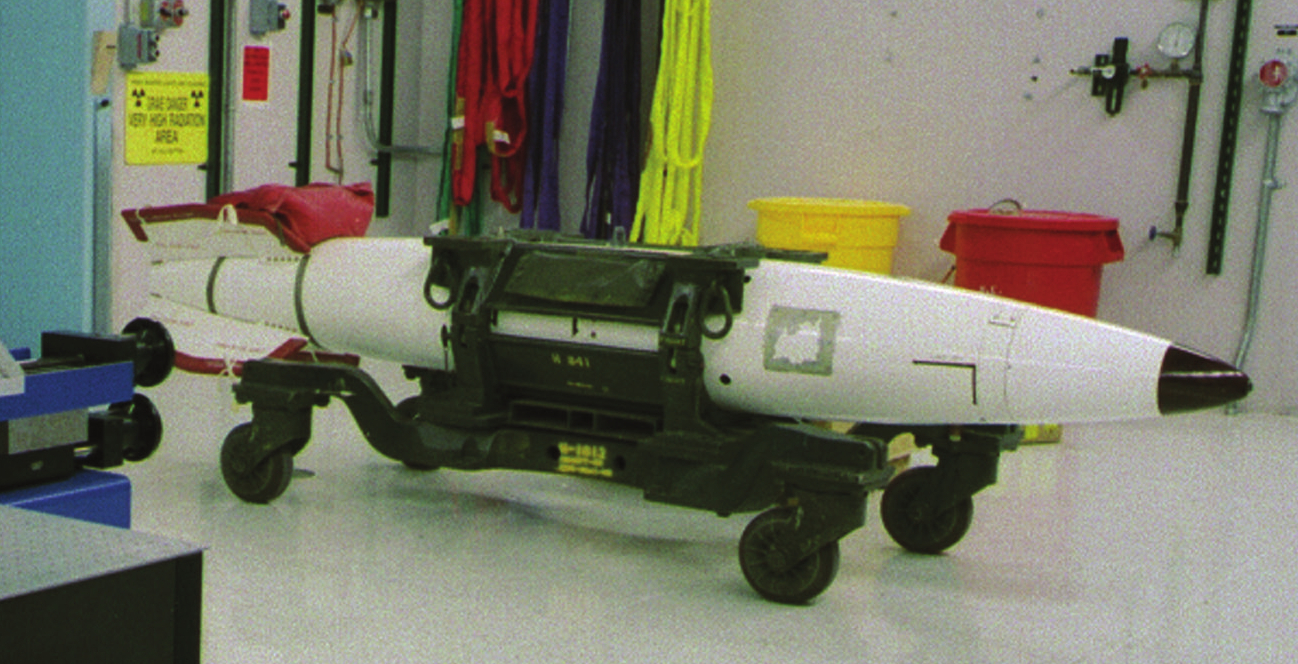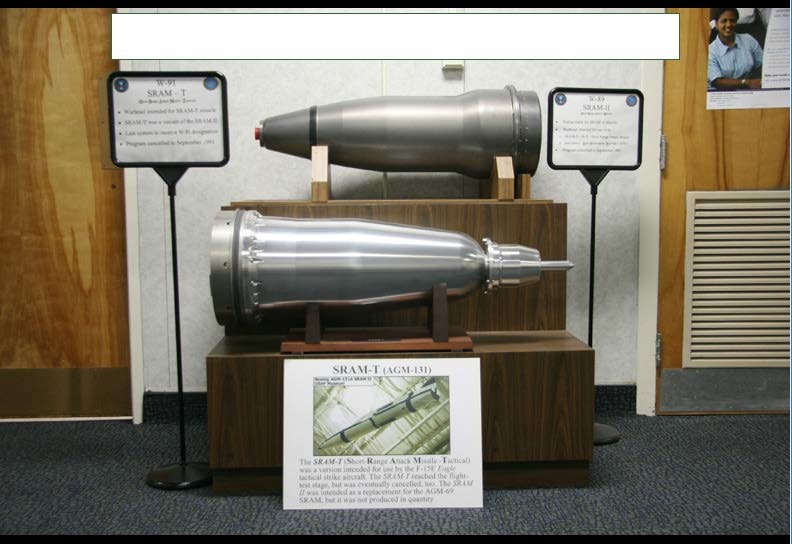|
B90 Nuclear Bomb
The B90 Nuclear Depth Strike Bomb (NDSB) was an American thermonuclear bomb designed at Lawrence Livermore National Labs in the mid-to-late 1980s and cancelled prior to introduction into military service due to the end of the Cold War. The B90 design was intended for use as a naval aircraft weapon, for use as a nuclear depth bomb and as a land attack strike bomb. It was intended to replace the B57 nuclear bomb used by the Navy. The B90 bomb design entered Phase 3 development engineering and was assigned its numerical designation in June 1988. The B90 was in diameter and long, and weighed . The B90's yield has been described at both and "low kt". This may indicate a variable yield weapon. The B90 was cancelled in September 1991 along with the W89 and W91 nuclear warheads and AGM-131 SRAM II and SRAM-T, SRAM-T missile models. No B90 production models were built, though test units may have been; US nuclear weapon testing continued until 1992. See also * List of nuclear weapons ... [...More Info...] [...Related Items...] OR: [Wikipedia] [Google] [Baidu] |
Nuclear Weapon
A nuclear weapon is an explosive device that derives its destructive force from nuclear reactions, either fission (fission bomb) or a combination of fission and fusion reactions ( thermonuclear bomb), producing a nuclear explosion. Both bomb types release large quantities of energy from relatively small amounts of matter. The first test of a fission ("atomic") bomb released an amount of energy approximately equal to . The first thermonuclear ("hydrogen") bomb test released energy approximately equal to . Nuclear bombs have had yields between 10 tons TNT (the W54) and 50 megatons for the Tsar Bomba (see TNT equivalent). A thermonuclear weapon weighing as little as can release energy equal to more than . A nuclear device no larger than a conventional bomb can devastate an entire city by blast, fire, and radiation. Since they are weapons of mass destruction, the proliferation of nuclear weapons is a focus of international relations policy. Nuclear weapons have been dep ... [...More Info...] [...Related Items...] OR: [Wikipedia] [Google] [Baidu] |
B90 Nuclear Depth Bomb
B9, B IX or B-9 may refer to: Science * Prodelphinidin B9, a plant phenolic compound * Vitamin B9, another name for folic acid * B-Nine WSG, a formulation of the plant growth regulator daminozide * Boron-9 (B-9 or 9B), an isotope of boron * A subclass of B- class stars Transport * B9 (Croatia), a road part of the Istrian Y highway complex * B9 (New York City bus) serving Brooklyn * Bundesstraße 9, a federal highway in Germany * Iran Airtour (IATA code B9) *Air Bangladesh (former IATA code B9) Vehicles * Bavarian B IX, an 1874 German steam locomotive model * Bavarian B IX (Ostbahn), an 1869 German steam locomotive model * Bensen B-9, a 1958 American small helicopter * Boeing B-9 (sometimes referred to as the Y1B-9 or YB-9), a 1931 United States Army Air Corps bomber * , a British Royal Navy B-class submarine * The former model name for the Subaru Tribeca Organizations * The abbreviation used for the record label Bridge Nine * Bucharest Nine (B9), a group of nine NATO mem ... [...More Info...] [...Related Items...] OR: [Wikipedia] [Google] [Baidu] |
Thermonuclear Bomb
A thermonuclear weapon, fusion weapon or hydrogen bomb (H bomb) is a second-generation nuclear weapon design. Its greater sophistication affords it vastly greater destructive power than first-generation nuclear bombs, a more compact size, a lower mass, or a combination of these benefits. Characteristics of nuclear fusion reactions make possible the use of non-fissile depleted uranium as the weapon's main fuel, thus allowing more efficient use of scarce fissile material such as uranium-235 () or plutonium-239 (). The first full-scale thermonuclear test was carried out by the United States in 1952; the concept has since been employed by most of the world's nuclear powers in the design of their weapons. Modern fusion weapons consist essentially of two main components: a nuclear fission primary stage (fueled by or ) and a separate nuclear fusion secondary stage containing thermonuclear fuel: the heavy hydrogen isotopes deuterium and tritium, or in modern weapons lithium deuteride. ... [...More Info...] [...Related Items...] OR: [Wikipedia] [Google] [Baidu] |
Lawrence Livermore National Labs
Lawrence Livermore National Laboratory (LLNL) is a federal research facility in Livermore, California, United States. The lab was originally established as the University of California Radiation Laboratory, Livermore Branch in 1952 in response to the detonation of the first atomic bomb by the Soviet Union during the Cold War. It later became autonomous in 1971 and was designated a national laboratory in 1981. A federally funded research and development center, Lawrence Livermore Lab is primarily funded by the U.S. Department of Energy and it is managed privately and operated by Lawrence Livermore National Security, LLC (a partnership of the University of California), Bechtel, BWX Technologies, AECOM, and Battelle Memorial Institute in affiliation with the Texas A&M University System. In 2012, the laboratory had the synthetic chemical element livermorium (element 116) named after it. Overview LLNL is self-described as a "premier research and development institution for scie ... [...More Info...] [...Related Items...] OR: [Wikipedia] [Google] [Baidu] |
Cold War
The Cold War is a term commonly used to refer to a period of Geopolitics, geopolitical tension between the United States and the Soviet Union and their respective allies, the Western Bloc and the Eastern Bloc. The term ''Cold war (term), cold war'' is used because there was no large-scale fighting directly between the two superpowers, but they each supported major regional conflicts known as proxy wars. The conflict was based around the ideological and geopolitical struggle for global influence by these two superpowers, following their temporary Allies of World War II, alliance and victory against Nazi Germany and Empire of Japan, Imperial Japan in 1945. Aside from the Nuclear arms race, nuclear arsenal development and conventional military deployment, the struggle for dominance was expressed via indirect means such as psychological warfare, propaganda campaigns, Cold War espionage, espionage, far-reaching Economic sanctions, embargoes, rivalry at sports events, and technolog ... [...More Info...] [...Related Items...] OR: [Wikipedia] [Google] [Baidu] |
B57 Nuclear Bomb
The B57 nuclear bomb was a tactical nuclear weapon developed by the United States during the Cold War. Entering production in 1963 as the Mk 57, the bomb was designed to be dropped from high-speed tactical aircraft. It had a streamlined casing to withstand supersonic flight. It was 3 m (9 ft 10 in) long, with a diameter of about 37.5 cm (14.75 in). Basic weight was approximately 227 kilograms (500 lbs). Some versions of the B57 were equipped with a parachute retarder (a 3.8 m/12.5 ft diameter nylon/ kevlar ribbon parachute) to slow the weapon's descent, allowing the aircraft to escape the blast (or to allow the weapon to survive impact with the ground in laydown mode) at altitudes as low as 15 m (50 ft). Various fuzing modes were available, including a hydrostatic fuze for use as a depth charge for anti-submarine use. The B57 was produced in six versions (mods) with explosive yields ranging from 5 to 20 kilotons. Mod 0 was 5 kt, Mod ... [...More Info...] [...Related Items...] OR: [Wikipedia] [Google] [Baidu] |
AGM-131 SRAM II
The AGM-131 SRAM II ("Short-Range Attack Missile") was a nuclear air-to-surface missile intended as a replacement for the AGM-69 SRAM. The solid-fueled missile was to be dropped from a B-1B Lancer, carry the W89 warhead and have a range of 400 km. However, the program was canceled by President George H. W. Bush for geopolitical reasons just as the first flight-test missile was delivered. Development The mission of the SRAM family is to deliver the warhead to the target without the need for the penetrating bomber to directly overfly the target. The SRAM family of weapons had an extremely small radar signature and were near-impossible to counter. SRAM ensured the airborne leg of the US nuclear triad (the others being land-based ICBMs and SLBM) and was the penetrating air launched strategic nuclear weapon for the B-1 Lancer and B-2 Spirit. In 1977, the USAF planned to develop an upgrade of the SRAM for the forthcoming B-1A bomber as AGM-69B SRAM B. When the B-1A was cance ... [...More Info...] [...Related Items...] OR: [Wikipedia] [Google] [Baidu] |
List Of Nuclear Weapons
This is a list of nuclear weapons listed according to country of origin, and then by type within the states. United States US nuclear weapons of all types – bombs, warheads, shells, and others – are numbered in the same sequence starting with the Mark 1 and () ending with the W-91 (which was canceled prior to introduction into service). All designs which were formally intended to be weapons at some point received a number designation. Pure test units which were experiments (and not intended to be weapons) are not numbered in this sequence. Early weapons were very large and could only be used as free fall bombs. These were known by "Mark" designators, like the Mark 4 which was a development of the Fat Man weapon. As weapons became more sophisticated they also became much smaller and lighter, allowing them to be used in many roles. At this time the weapons began to receive designations based on their role; bombs were given the prefix "B", while the same warhead used in other r ... [...More Info...] [...Related Items...] OR: [Wikipedia] [Google] [Baidu] |
Nuclear Bombs Of The United States
*
*
{{Disamb ...
Nuclear may refer to: Physics Relating to the nucleus of the atom: *Nuclear engineering *Nuclear physics *Nuclear power *Nuclear reactor *Nuclear weapon *Nuclear medicine *Radiation therapy *Nuclear warfare Mathematics *Nuclear space *Nuclear operator *Nuclear congruence *Nuclear C*-algebra Biology Relating to the nucleus of the cell: * Nuclear DNA Society *Nuclear family, a family consisting of a pair of adults and their children Music * "Nuclear" (band), group music. * "Nuclear" (Ryan Adams song), 2002 *"Nuclear", a song by Mike Oldfield from his ''Man on the Rocks'' album * ''Nu.Clear'' (EP) by South Korean girl group CLC See also *Nucleus (other) *Nucleolus *Nucleation *Nucleic acid *Nucular ''Nucular'' is a common, proscribed pronunciation of the word "nuclear". It is a rough phonetic spelling of . The ''Oxford English Dictionary''s entry dates the word's first published appearance to 1943. Dictionary notes This is one of two con ... [...More Info...] [...Related Items...] OR: [Wikipedia] [Google] [Baidu] |
Cold War Aerial Bombs Of The United States
Cold is the presence of low temperature, especially in the atmosphere. In common usage, cold is often a subjective perception. A lower bound to temperature is absolute zero, defined as 0.00K on the Kelvin scale, an absolute thermodynamic temperature scale. This corresponds to on the Celsius scale, on the Fahrenheit scale, and on the Rankine scale. Since temperature relates to the thermal energy held by an object or a sample of matter, which is the kinetic energy of the random motion of the particle constituents of matter, an object will have less thermal energy when it is colder and more when it is hotter. If it were possible to cool a system to absolute zero, all motion of the particles in a sample of matter would cease and they would be at complete rest in the classical sense. The object could be described as having zero thermal energy. Microscopically in the description of quantum mechanics, however, matter still has zero-point energy even at absolute zero ... [...More Info...] [...Related Items...] OR: [Wikipedia] [Google] [Baidu] |



.png)


